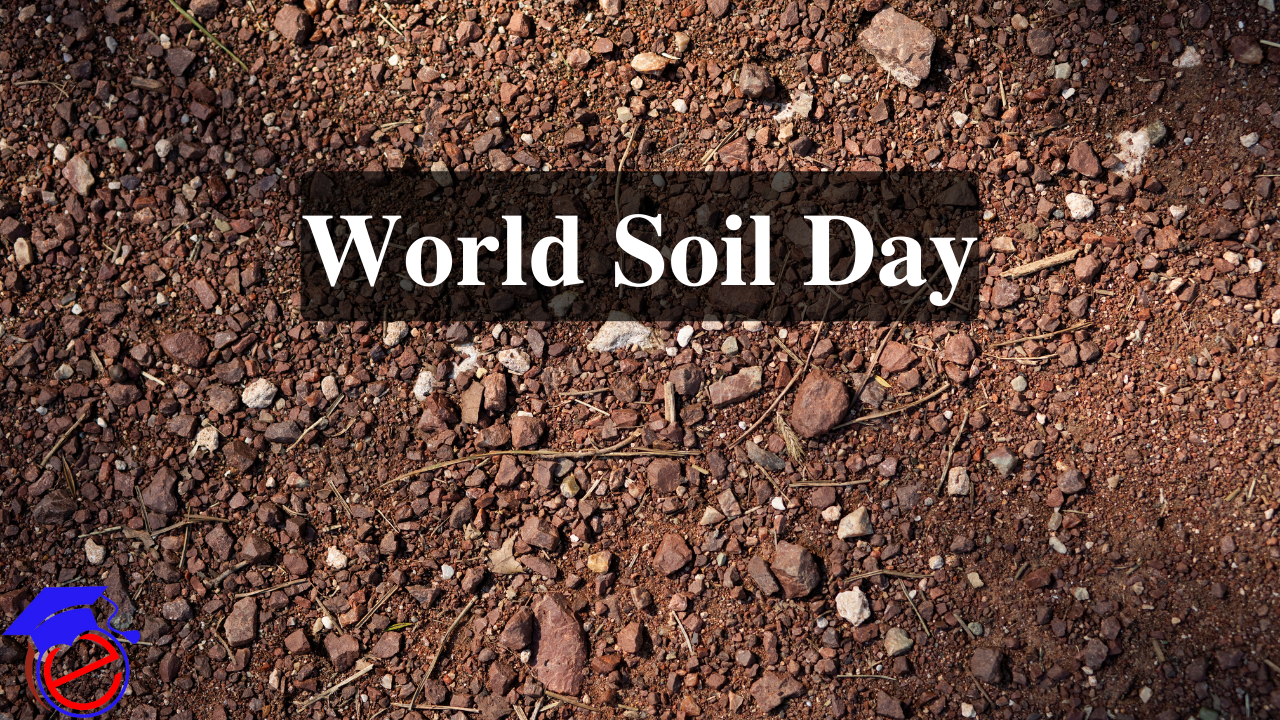
Every year on December 5, World Soil Day is observed to promote awareness of the value of healthy soil and the precautions that must be taken to preserve it.
For human survival, the soil is a crucial resource. World Soil Day, serves as the basis for agriculture, fosters a diverse ecosystem, and is essential to controlling the water and carbon cycles on Earth. However, because of how quickly human activity is degrading soil resources, immediate protection is required. The purpose of World Soil Day is to increase public awareness of the value of healthy soil and the steps that can be taken to protect it.
For the production of food, fuel, and fibre, healthy soil is crucial. Crop yields can be sustained by a diverse ecosystem that can be supported by healthy soil. In order to lessen the effects of climate change, healthy soil can also function as a carbon sink.
Healthy soil is essential for controlling the water and carbon cycles. By storing carbon in the soil, healthy soil can help to reduce the amount of carbon in the atmosphere as well as help to retain water, lowering the risk of flooding and drought.
Health Risks to the Soil
The health of the soil is at risk from a number of factors, including contamination, degradation, and erosion. A significant risk is soil erosion because it can result in the loss of fertile soil, which makes it more challenging to grow crops. Another significant threat is soil degradation, which can result in a decline in soil fertility and the loss of wildlife.
Another significant risk is soil contamination, which is brought on by the use of pesticides, herbicides, and other chemicals. Both human and environmental health can be negatively impacted by soil contamination. Another major threat is climate change, which can result in variations in temperature and precipitation patterns, which can worsen soil erosion and degradation.
Conservation initiatives
Conservation efforts must be made at the local, national, and international levels to safeguard soil health. Utilizing sustainable farming techniques, such as crop rotation, cover crops, and minimal tillage is one of the best ways to preserve soil health. These methods can help to strengthen the condition of the soil, boost crop yields, and lower the danger of soil erosion.
The management of land use is a vital conservation effort. This can be done through the use of zoning, land use planning, and other strategies to limit the conversion of natural areas to urban or agricultural use, which can help to protect soil health.
In order to conserve soil, education, and awareness-raising are also essential. People can make wise choices about how to use land and resources and how to lessen their impact on soil health by being informed about the significance of soil health and the steps that can be taken to protect it.
Conservation of Soil Diversity
Making sure that efforts to conserve soil are inclusive and diverse is crucial. This implies that individuals from all backgrounds, regardless of race, ethnicity, gender, sexual orientation, or disability, should participate in and benefit from efforts to conserve soil.
Indigenous peoples, who frequently have strong ties to the land, are especially significant in conserving soil because they frequently have traditional knowledge and practices that can be used to maintain the health of the soil. The effectiveness, sustainability, and inclusivity of efforts to conserve soil can be improved by collaborating with and assisting indigenous communities.
Participating in local communities in the management and decision-making of land use is another way to promote inclusion and diversity in soil conservation. This could guarantee soil conservation.
If you have any suggestions regarding this article then you can leave your suggestion in the comment box.
